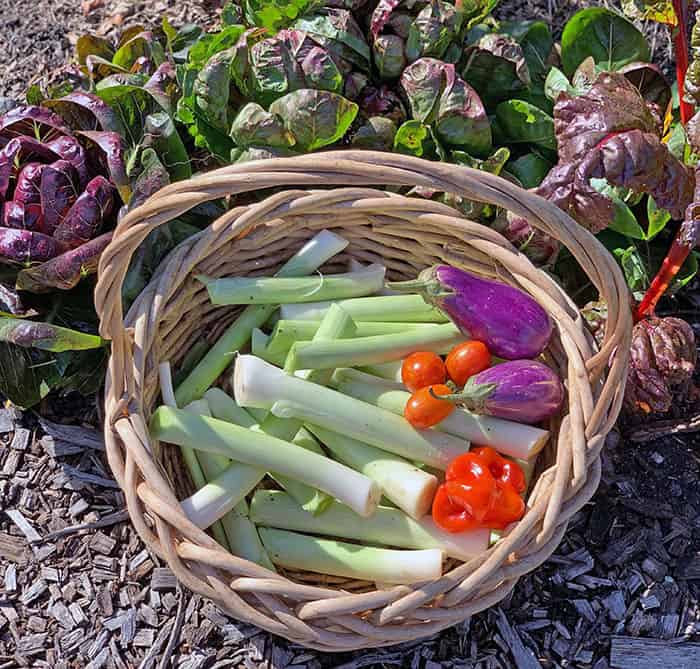Name: King Richard Leeks aka Allium porrum ‘King Richard’
Type of Plant: Leeks are a hardy biennial that we grow as an annual vegetable in the northeast. It’s in the genus Allium, so you know it’s related to other onions.
Why I Love/Hate this plant: I love leeks because they are easy to grow and last a long time in the vegetable garden. You can harvest some when they are as thin as scallions, and others you can let mature in the garden. Since they withstand frosts, they are one of the vegetables you can harvest into and even through December in this region. The variety called ‘King Richard’ is perfect for shorter growing seasons.
A Word to the Wise: Leeks can either be grown from seed or from what we call “starts,” which are young plants. Starts are shipped in a bundle in the spring, and in this area we plant them in late May. If you’re starting leeks from seed you can sow them inside in late March or early April, and transplant into the garden at the end of May. Place leek plants about four inches apart unless you want to grow them more closely and harvest every other one as the summer goes on.
You can freeze leeks by pan-cooking them in olive oil and then putting them in plastic freezer bags or cartons for future cooking.

This row of leeks was planted from starts in late May on Cape Cod. In October I harvested all the largest ones to cook and freeze, and these are being picked gradually for dinner preparations through December.

If you have an electric frying pan, cooking the leeks outdoors is a good idea. Since they are pungent, your entire house is likely to smell like leeks when you cook many of them indoors.

Here is how my leeks looked on November 1st. Still growing strong.


Leaving leeks in the ground is no problem right..? don’t have to harvest all at once when you hit 75 days..sorry to be naive.. just beginner ignorance.
Brian,
No, you don’t have to harvest unless the plants look like they are shutting down (turning brown) – if they start to flower, cut the flowers off. We start harvesting the large ones in August and let the smaller ones grow on. Also, we cut and freeze excess for the future. Enjoy!
Bought 2 pots of King Richard Leeks at my local nursery. They appear to have many stalk in each container. Do I separate these and plant each 3-4” apart or plant in one clump? Growing in Golden, Colorado.
Yes – separate and plant 4 to 6 inches apart.
Do you think leeks would grow in earth boxes? I don’t have a vegetable garden
Yes, but you’d have to really love leeks to devote an entire earthbox to them for the amount of time it takes for them to grow.